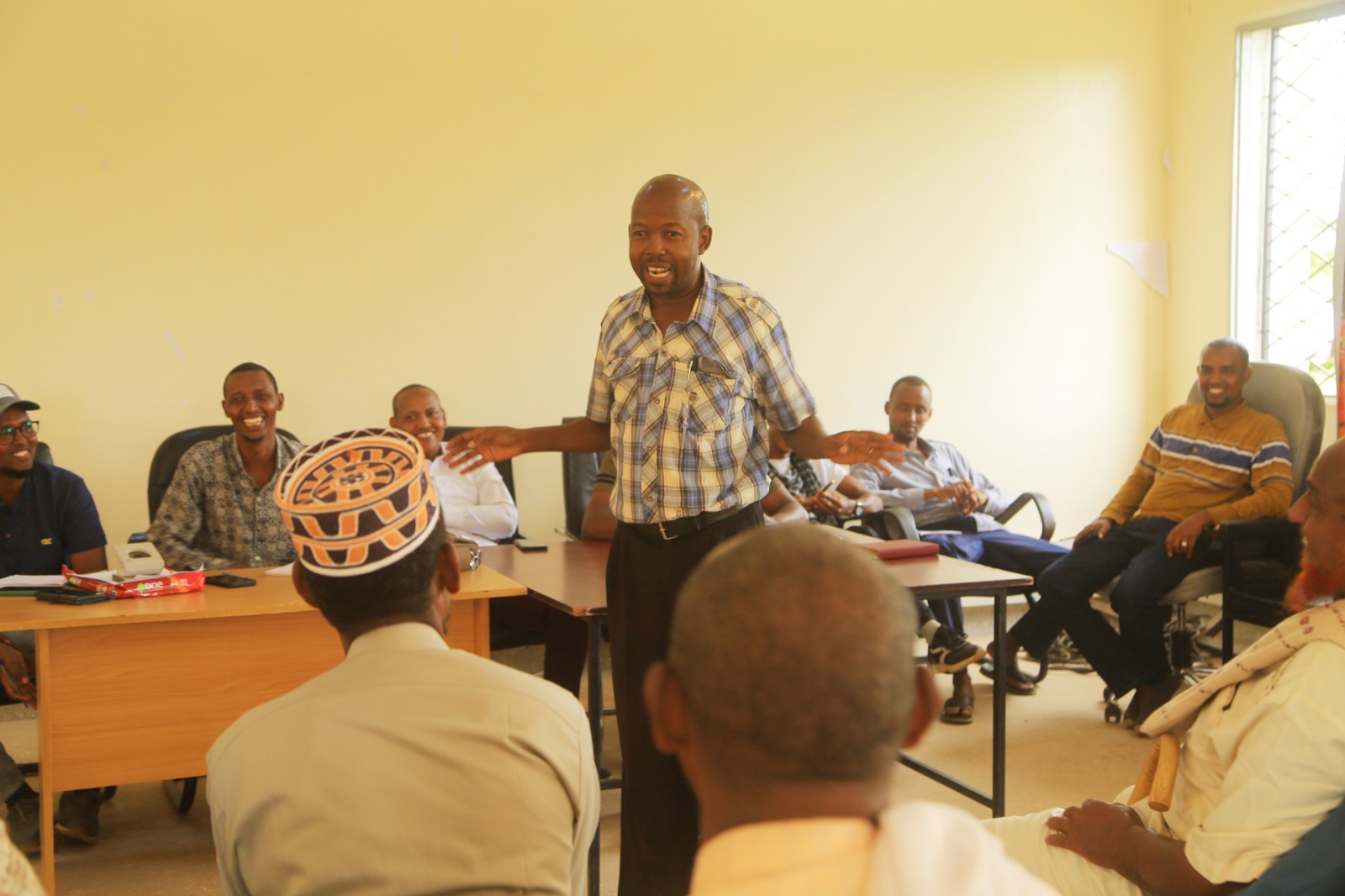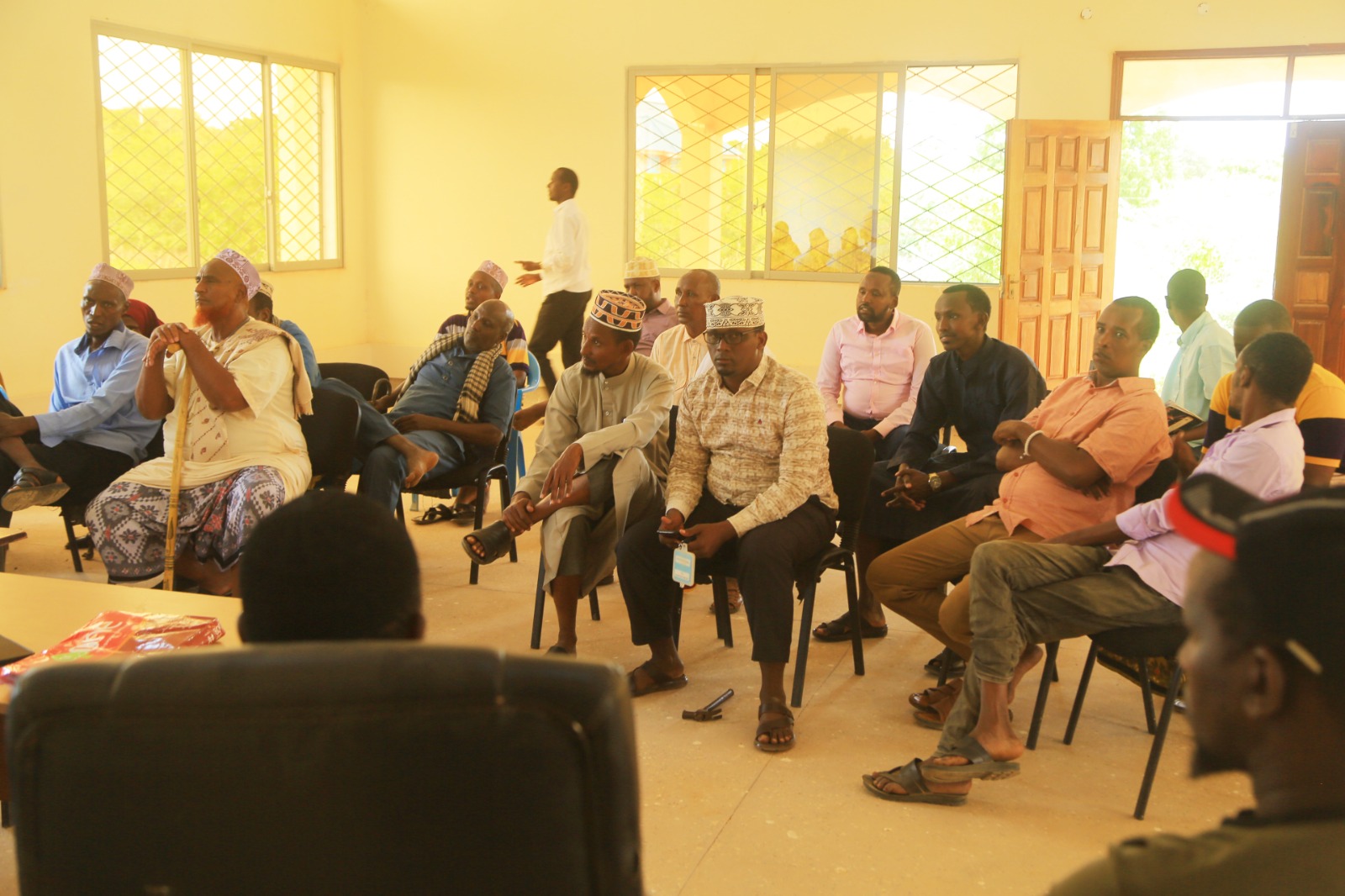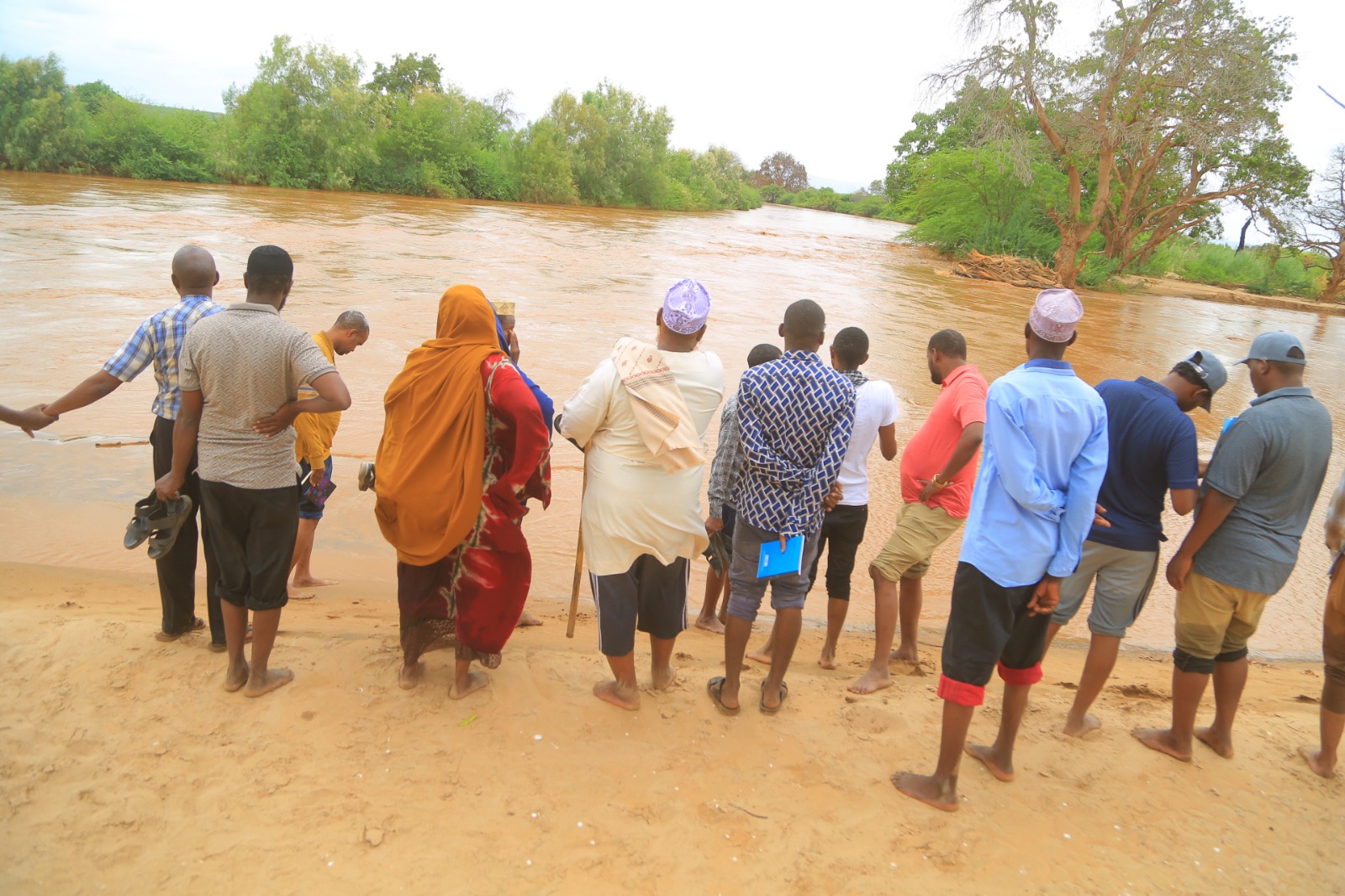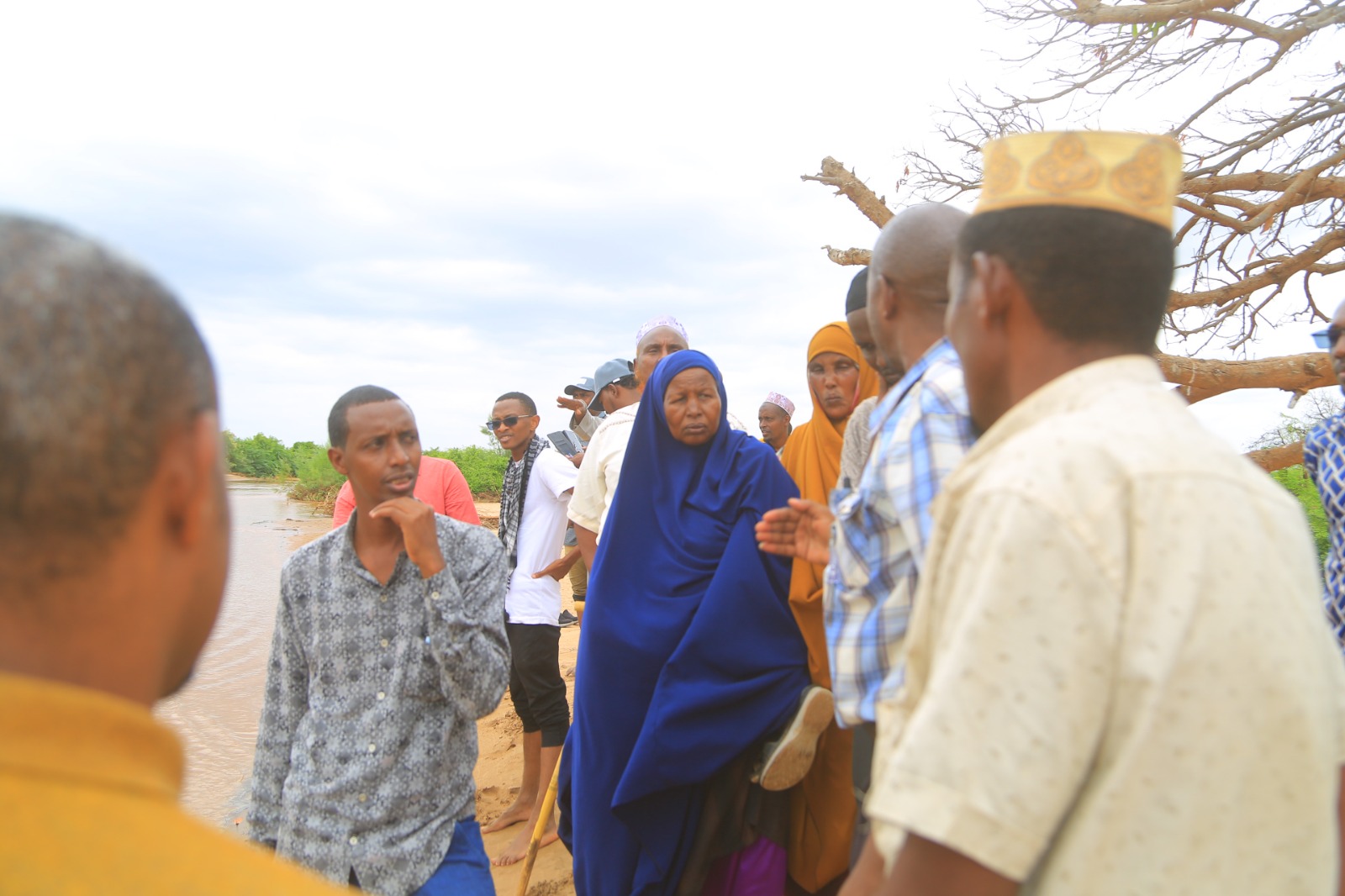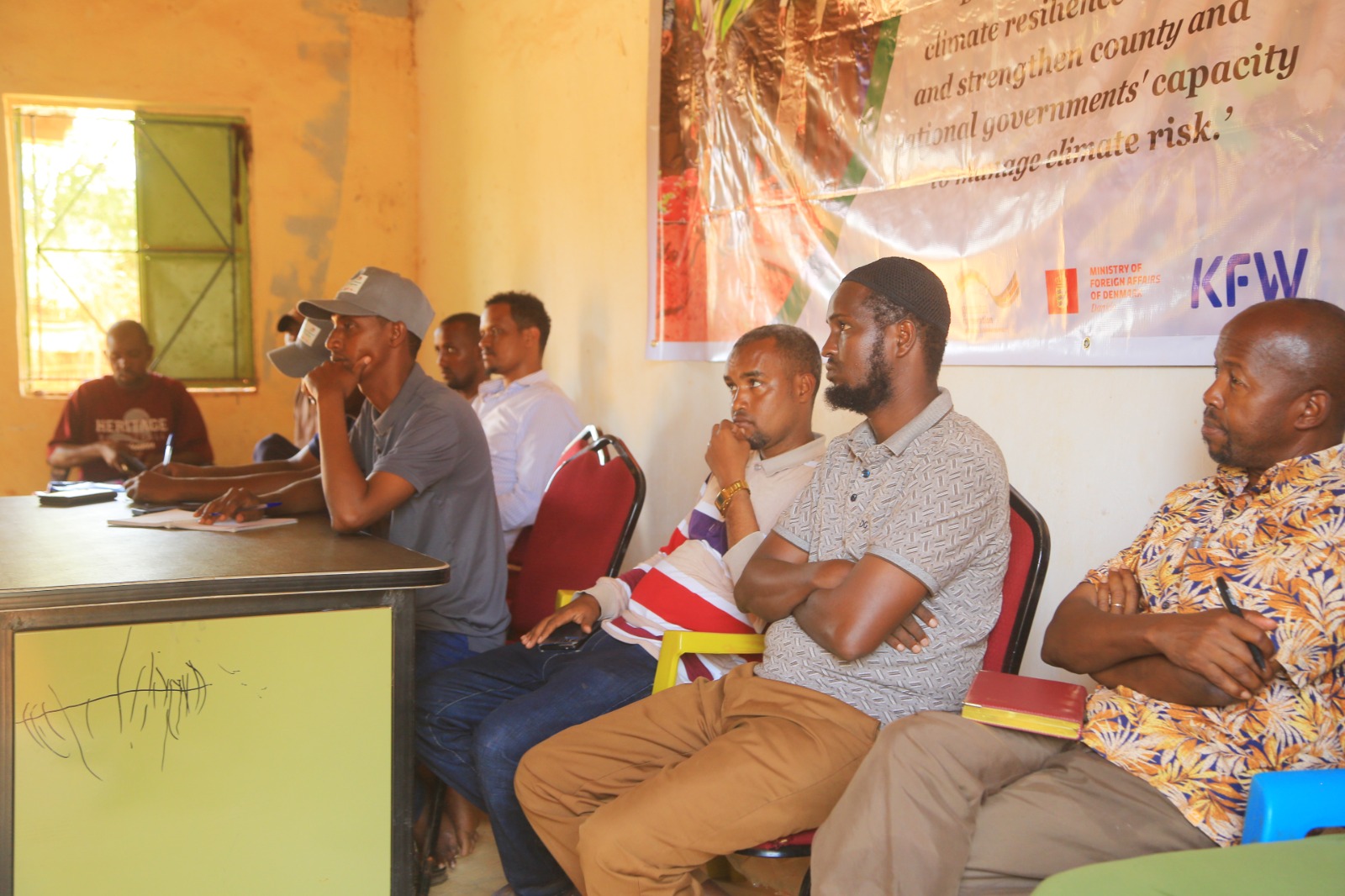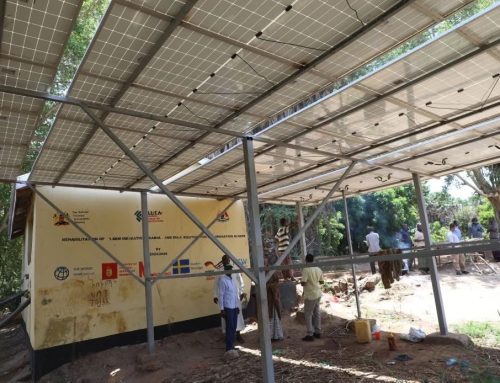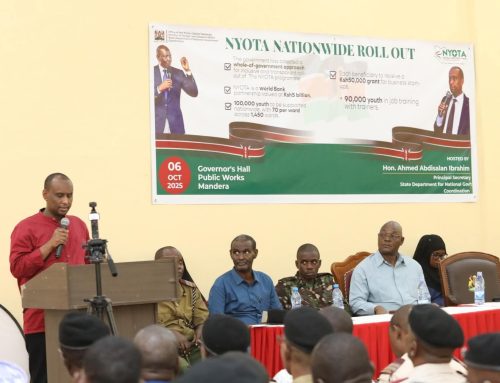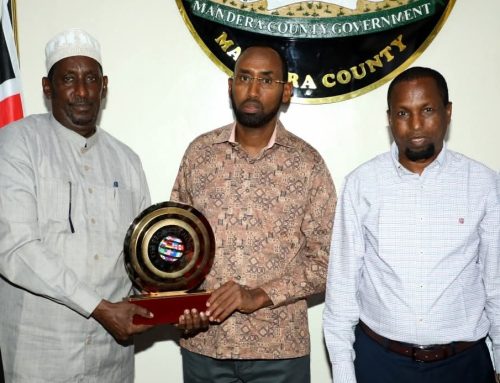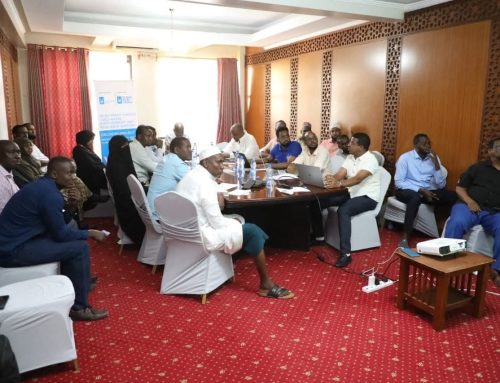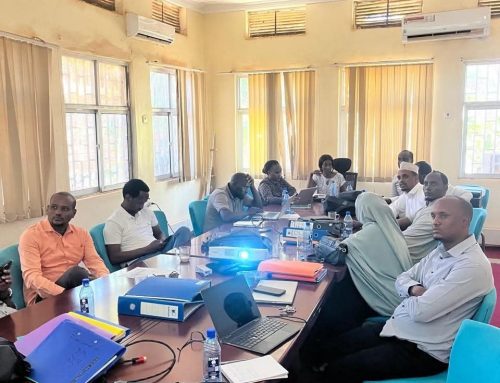Rhamu Mandera North
A multi-agency team, including engineers, environmental and social safeguards experts, NEMA, WRA, Lands, and CCU members, has conducted a feasibility study, project design, and BoQ development, along with an environmental and social impact assessment for the proposed flood control structures for the Shantoley irrigation scheme in Rhamu ward. The team engaged with the community and visited the project site.
During their visit, the team met with community representatives, including members of the Ward Climate Change Planning Committee (WCCPC), Shantoley farmers’ representatives, county and national government officials, women, and youth. They briefed the farmers on the mission of the visit, highlighting the FLLoCA Program, the process for identifying the proposed project, its components, and the necessary prerequisites before commencement.
The community expressed their gratitude for the proposed intervention, emphasizing the urgent need for a flood control project to address the recurring flood problems. They also raised other challenges, such as poor access roads to the farms due to the invasive Prosopis juliflora (“mathenge”).
Project Site Visit
The team, along with some community representatives, visited the proposed project site and encountered several challenges:
1. Poor Access Roads: The roads were nearly impassable due to the invasive “mathenge.”
2. Flooding: The river had broken its banks, flooding the farms and making access difficult. The team had to walk barefoot through floodwaters and mud to reach the site.
Issues Observed:
1. A major breakpoint section from the river.2. Previous initiatives, including gunny bag dykes erected by farmers, were swept away by floods. Various entities employed different flood control measures such as earthen dykes and gabion control structures, but these proved inadequate, allowing floodwaters to create a new breakpoint beyond the constructed structures.
3. The river still contains large volumes of water flowing towards the farms through the breakpoint.
4. The farms remain flooded with significant mud in some sections, making access to the project site difficult.
5. Given these challenges, it is important to reassess the project site once the water subsides to determine the extent of the necessary work.
6. The project should only commence when conditions are favorable for accessing the site.
Kiliwehiri
On the second day of scheduled public participation, the team surveyed Kiliwehiri’s water needs to develop a comprehensive plan for the town’s water supply system.
As part of the FLLoCA Program, the Department of Environment and Climate Change is leading a water supply improvement project in Kiliwehiri. This project includes constructing a water treatment unit, a draw-off system, fencing the water plant, and tree planting. Through consultations with local communities, the team identified the water pan for the water supply system improvement, which will constitute Phase I of the plan.
Additionally, the team collected feedback from locals, including their concerns and recommendations, which will be incorporated into the decision-making process for the plan.

